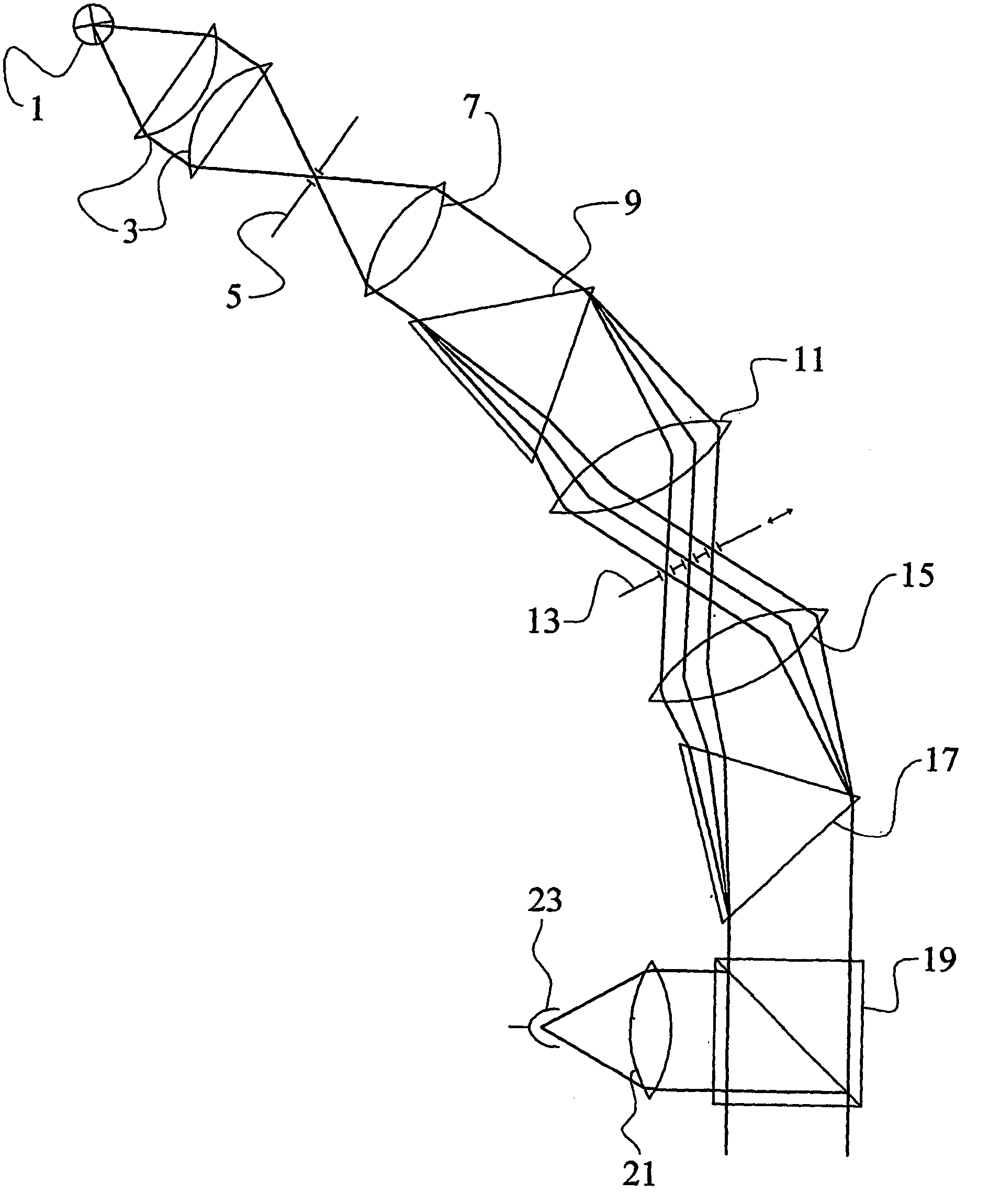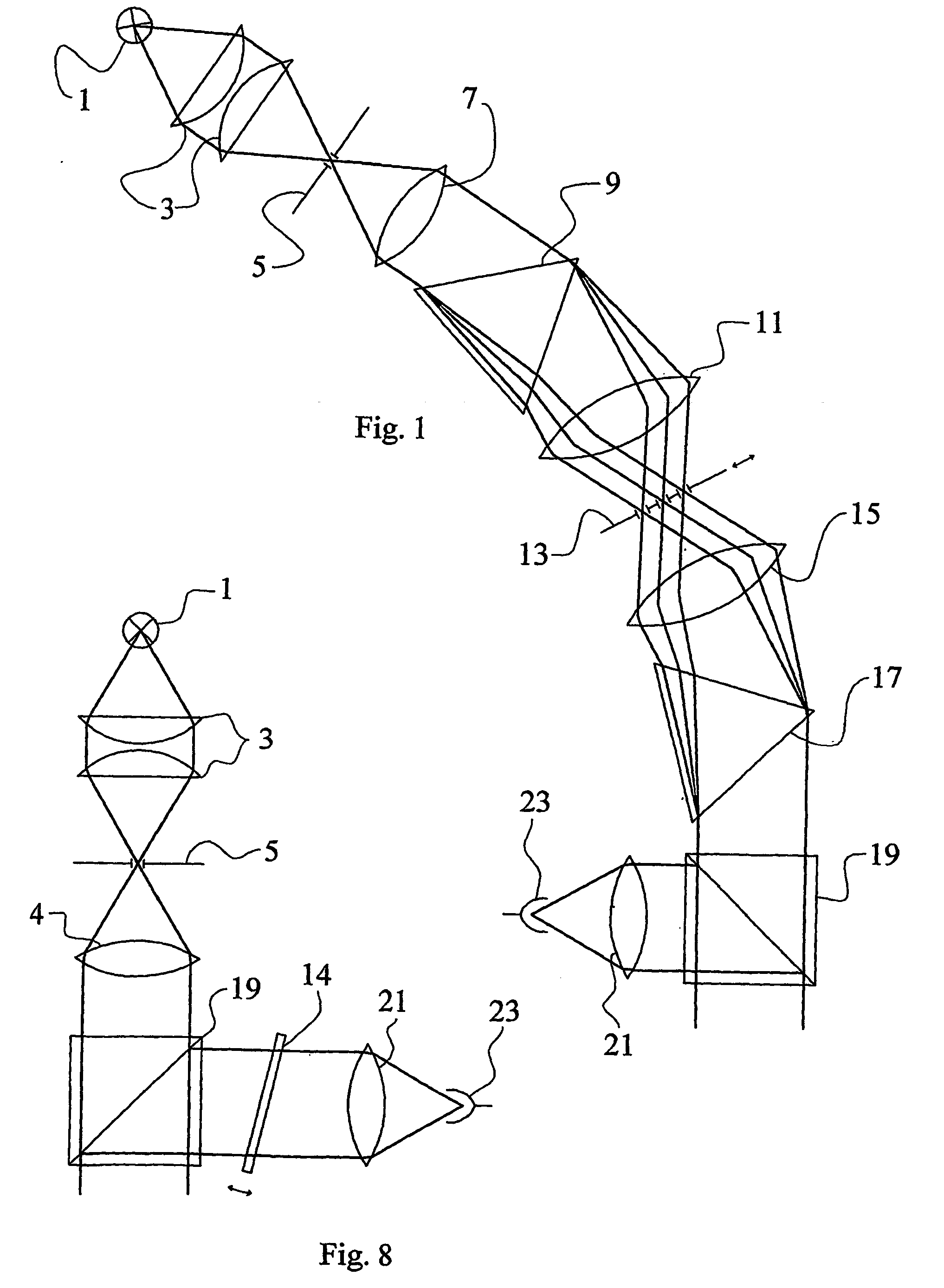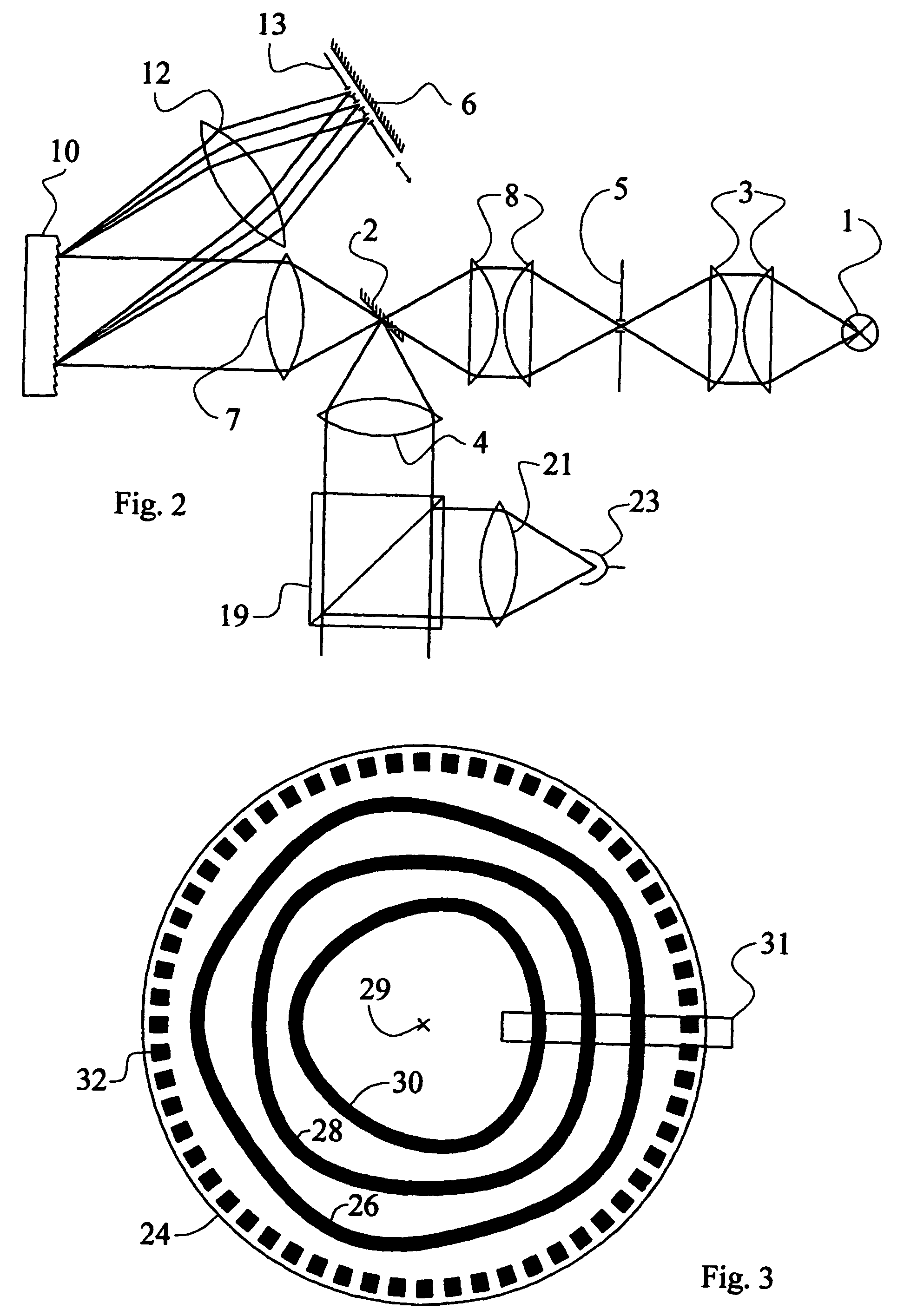Device, method and system for determining the road surface condition
a technology of road surface condition and device, applied in the direction of material analysis, instruments,spectrum investigation, etc., can solve the problems of prone to faults and wear, not applicable to the problem of determining the road surface condition at or near a moving vehicle, and no provision for separating reflectan
- Summary
- Abstract
- Description
- Claims
- Application Information
AI Technical Summary
Benefits of technology
Problems solved by technology
Method used
Image
Examples
first embodiment
[0020]FIG. 1 shows the ice and water detection device which uses prisms as dispersing elements. The embodiment comprises a light beam emitter with suitable optical properties, constituted by a light source 1, and a first focusing element 3 focusing a portion of the light emitted by the light source on an aperture 5. The light source 1 is schematically shown as an incandescent lamp, and the first focusing element 3 is drawn as a pair of planoconvex lenses, but this is chosen only for illustrating the fundamental function of the device.
[0021] The diverging light beam emitted from the aperture 5 is then transmitted towards a first wavelength selective system. In the wavelength selective system the beam is collimated by a first lens 7, and the collimated beam is directed through a first dispersing prism 9. The light beam transmitted through the prism is dispersed into a range of wavelengths, which are focused by a second lens 11 onto a selection element 13 which only transmits selected ...
second embodiment
[0024]FIG. 2 shows the detection device which instead of prisms uses reflecting gratings, which have a much higher dispersive power, as dispersing elements. The embodiment comprises a light beam emitter identical to the one in FIG. 1, and the emitted light is focused by a second focusing element 8 drawn as a pair of planoconvex lenses. The focused beam passes, at its focal point, above a first mirror 2 (being positioned in a direction below the paper plane of the figure), and is then directed to a second wavelength selective system.
[0025] In the second wavelength selective system the beam is collimated by a first lens 7, and the collimated beam i directed towards a reflective grating 10. The light beam reflected from the grating is dispersed into a range of wavelengths, which are focused by a fifth lens 12 onto a selection element 13 which only transmits selected segments of the light focused onto it. The selection element 13 is here embodied as a chopper wheel 24, shown in FIG. 3. ...
third embodiment
[0041]FIG. 8 shows the detection device which instead of a dispersive element 9, 10, 17 and a wavelength selection element 13 uses a pivoting dielectric filter 14. Here, the wavelength modulation occurs after the light hitting the road surface has been received by the detection device. To be able to separate light originating from the light beam emitter of the detection device from background radiation, the aperture 5 of the light beam emitter is embodied as the aperture of a chopper wheel for intensity modulation. The result is that amplitude modulated light of a known frequency fA is emitted from the light beam emitter and may be separated from background radiation. The amplitude modulated light is then collimated by a sixth lens 4, partially transmitted through a beam splitter 19, and hits the road surface.
[0042] Light reflected from the road surface hitting the beam splitter 19, is partially reflected by the beam splitter 19 and transmitted in a direction orthogonal to that of t...
PUM
| Property | Measurement | Unit |
|---|---|---|
| reflectance spectrometer | aaaaa | aaaaa |
| reflectance properties | aaaaa | aaaaa |
| wavelength modulation spectrometer | aaaaa | aaaaa |
Abstract
Description
Claims
Application Information
 Login to View More
Login to View More - R&D
- Intellectual Property
- Life Sciences
- Materials
- Tech Scout
- Unparalleled Data Quality
- Higher Quality Content
- 60% Fewer Hallucinations
Browse by: Latest US Patents, China's latest patents, Technical Efficacy Thesaurus, Application Domain, Technology Topic, Popular Technical Reports.
© 2025 PatSnap. All rights reserved.Legal|Privacy policy|Modern Slavery Act Transparency Statement|Sitemap|About US| Contact US: help@patsnap.com



